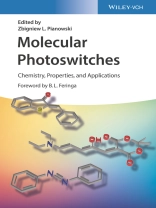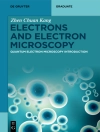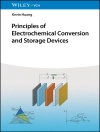A comprehensive overview about the emerging field of photoswitches and their applications in materials science and biology
Molecular Photoswitches guides the reader through the basic molecular structures of photochromic compounds and their applications in the area of photoresponsive materials as well as in the biological context. The initial chapters describe individual classes of molecular photoswitches, introducing their principles of photochromism, typical switching wavelengths, thermal stability of photoisomers and other key information, which is ordinarily spread in the literature. These classes comprise i.a. azobenzenes, diazocines, arylazoheterocycles, arylhydrazones, indigoids, photochromic imines, or acylhydrazones. The book also covers:
- Catalysis with molecular switches
- Applications in photochromic porous materials, liquid crystals, or nanoparticles
- Light-responsive molecular machines, logic devices, and molecular magnets
- Photomodulation of biological systems: photoswitchable biopolymers, lightmodulated antibiotics, cytotoxins, ion channel inhibitors, light-propelled artificial muscles, and computationally designed photochromic proteins
This two-volume work is a valuable guide for researchers and non-experts working in the field of photochemistry, organic chemistry, catalysis, materials science, biology, and medicine.
Mục lục
Editorial Introduction
SECTION I. Chemical Classes of Molecular Photoswitches
Azobenzenes: The Quest for Visible Light Triggering
Diazocines –
Bridged Azobenzenes with Unusual Properties
Arylazoheterocycles
Arylhydrazones
Spiropyrans –
Molecular with Multiple Facets
Diarylethenes –
Molecules with Good Memory
Fulgides and Fulgimides
Stilbenes and Molecular Machines
Overcrowded Alkenes and Chirochromism
Indigoids
Donor-Acceptor Stenhouse Adducts
Photochromic Imines
Acylhydrazones
Norbornadiene/Quadricyclane (NBD/QC) and Conversion of Solar Energy
Dihydroazulene/Vinylheptafulvene (DHA/VHF) and Molecular Electronics
SECTION II. Applications of Molecular Photoswitches for Materials Sciences
Switchable Molecular Magnets
Superresolution Microscopy with Photoswitchable Fluorophores
Catalysis with Molecular Switches
Molecular Switches in Confined Spaces and on Nanoparticles
Switchable Soft Materials
Making and Breaking Bonds with Light in Crystals
SECTION III. Photomodulation of Biological Systems
Photopharmacology
Restoring Vision –
Ion Channels and Switches
Photochromic Oligonucleotides
Photochromic Peptides and Proteins
Photochromic Lipids
Computational Design of Photochromic Proteins
Giới thiệu về tác giả
Zbigniew Pianowski received his Ph.D. in chemistry in 2008 under the supervision of Prof. Nicolas Winssinger at ISIS ULP Strassbourg. Then, he joined the group of Prof. Donald Hilvert at ETH Zürich as postdoctoral fellow, working in the area of protein engineering. Since 2014, he has been an independent group leader (KIT Associate Fellow) at the Karlsruhe Institute of Technology. His current research interests are focused on applications of molecular photoswitches to control biological systems, the origins of life on earth, and various aspects of synthetic biology.












